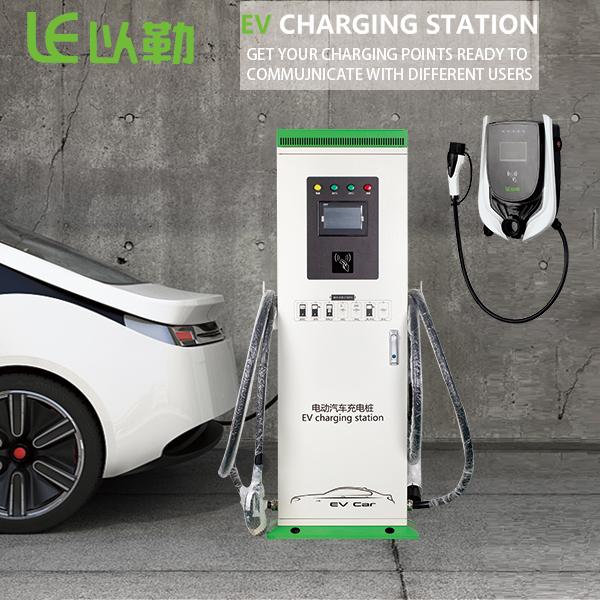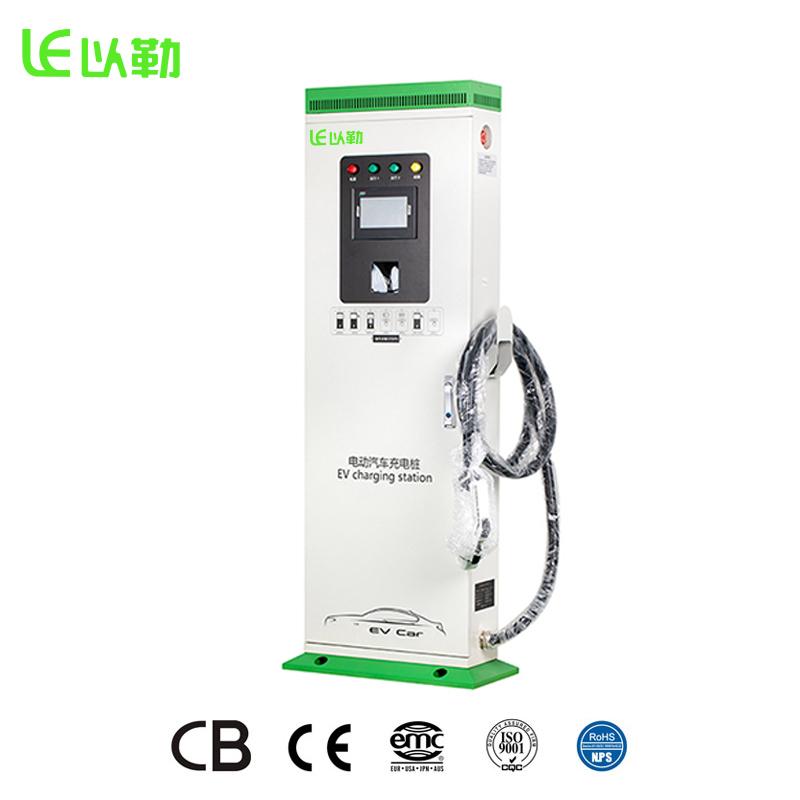
Urban fleets rely on rapid charging to keep vehicles moving. An Ev Dc Fast Charger reduces wait times and increases vehicle uptime.
| Scenario | DC 150-kW Ports Needed |
|---|---|
| Business as Usual | 1,054 |
| Home Charging for All | 367 |
Quick charging helps fleets serve more customers and meet tight schedules.
Key Takeaways
- Ev DC Fast Chargers cut charging time from hours to minutes, letting urban fleets keep vehicles on the road longer and serve more customers each day.
- Fast chargers offer flexible, quick top-ups that help fleets avoid delays, manage busy schedules, and handle different vehicle types efficiently.
- Smart charging features like real-time monitoring and AI improve fleet management, lower costs, and boost overall productivity.
Urban Fleet Challenges and the Role of Ev Dc Fast Charger
High Utilization and Tight Schedules
Urban fleets often operate with high vehicle usage and strict schedules. Each vehicle must complete as many trips as possible in a day. Delays in charging can disrupt these schedules and reduce the number of trips. When vehicles spend less time charging, they can serve more customers and meet tight deadlines. An Ev Dc Fast Charger helps fleets keep up with busy city life by providing quick energy boosts, allowing vehicles to return to service faster.
Limited Charging Opportunities in Urban Settings
Urban areas present unique challenges for fleet charging. Charging stations are not always evenly spread across the city. Studies show that:
- High-power charging demands often cluster in certain city areas, creating stress points on the local grid.
- Different types of vehicles, like taxis and buses, have varying charging needs, making planning more complex.
- The number of charging events is not balanced throughout the city, so some areas have fewer charging options.
- The ratio of trip requests to charging stations changes from place to place, showing that charging opportunities can be scarce.
- Urban traffic patterns and road networks add to the challenge, making it hard for fleets to find available charging spots when needed.
Need for Maximum Vehicle Availability
Fleet managers aim to keep as many vehicles on the road as possible. Vehicle utilization rates show how much time vehicles spend working versus sitting idle. Low utilization means higher costs and wasted resources. For example, if only half the fleet is in use, the business loses money and cannot meet customer demand. High downtime reduces productivity and profit. Accurate tracking and good management help fleets spot problems and improve vehicle readiness. Reducing downtime with fast charging keeps vehicles available, supports customer needs, and boosts overall efficiency.
Productivity Benefits of Ev Dc Fast Charger

Rapid Turnaround and Reduced Downtime
Urban fleets need vehicles back on the road quickly. An Ev Dc Fast Charger delivers high power directly to the battery, which means vehicles can recharge in minutes instead of hours. This rapid charging process keeps downtime low and helps fleets meet tight schedules.
- DC fast chargers (Level 3 and above) can fully recharge a vehicle in 10–30 minutes, while Level 2 chargers may take several hours.
- These chargers are 8–12 times more effective than Level 2 chargers, making them ideal for emergency or on-the-go charging.
- Real-world data shows DC fast chargers have nearly three times higher utilization rates than AC Level 2 chargers.
Public corridor DC fast charging stations are placed along busy routes to support long-distance trips and reduce charge anxiety. This setup confirms the fast turnaround capability of DC fast chargers compared to slower methods.
Enhanced Operational Flexibility
Fleet managers need flexibility to handle changing schedules and unexpected demands. Ev Dc Fast Charger technology supports this by offering quick top-ups and the ability to serve different types of vehicles.
| Aspect | Numerical Data / Range | Operational Significance |
|---|---|---|
| Depot Charging Time (Level 2) | 4 to 8 hours for full charge | Suitable for overnight charging |
| Depot Charging Time (DCFC) | Under 1 hour for significant charge | Enables quick turnarounds and emergency top-ups |
| Charger-to-Vehicle Ratio | 1 charger per 2-3 vehicles, 1:1 for tight schedules | Avoids bottlenecks, supports operational efficiency |
| DCFC Power Output | 15-350 kW | High power enables rapid charging |
| Full Charge Time (Medium Truck) | 16 minutes to 6 hours | Flexibility depending on vehicle and operational needs |
A fleet can adjust charging times and schedules based on real-time needs. This flexibility helps avoid bottlenecks and keeps more vehicles available for service.
Optimized Route Planning and Scheduling
Efficient route planning depends on reliable and fast charging. An Ev Dc Fast Charger allows fleets to plan routes with fewer stops and less waiting time.
Empirical tests show that optimized charging strategies reduce power grid pressure and improve clean energy use. Dynamic pricing and smart scheduling help fleets charge vehicles when demand is low, which reduces waiting times and supports better route planning.
Simulation studies reveal that using real-time traffic data and smart charging schedules lowers congestion at charging stations. This leads to improved EV usage efficiency and lower operational costs. A joint optimization model that combines route planning and charging schedules can improve charging efficiency and enable real-time re-planning if disruptions occur.
- DC fast chargers can charge an EV battery in about 20 minutes, compared to over 20 hours for Level 1 and around 4 hours for Level 2 chargers.
- Operational limits of distribution networks can affect mobile charging station routing and profitability by up to 20%.
- By the end of 2022, China had installed 760,000 fast chargers, showing the global trend toward faster charging infrastructure.
Support for Larger and More Diverse Fleets
As fleets grow and diversify, they need charging solutions that can handle many vehicles and different types of EVs. Ev Dc Fast Charger systems provide the speed and scalability required for large operations.
- DC fast chargers add up to 250 miles of range in about 30 minutes, which is ideal for high-demand fleets.
- Networked charging solutions allow remote monitoring and control, improving efficiency.
- Smart charging stations use load management and dynamic pricing to lower electricity costs and reduce grid strain.
- Scalable systems can deliver up to 3 MW total power with multiple outputs, supporting large fleets.
- Integration with energy storage and renewables enables smarter energy use and cost reduction.
A hybrid strategy that combines Level 2 chargers for overnight charging and DC fast chargers for quick top-ups helps fleets balance cost and speed. Advanced management software tracks charging by vehicle and sends alerts for issues, improving uptime and efficiency.
Smart Features for Fleet Efficiency
Modern Ev Dc Fast Charger stations come with smart features that boost fleet efficiency. These include telematics, AI, and advanced management systems.
- Telematics provides real-time monitoring of vehicle health and battery status, enabling proactive maintenance.
- AI and machine learning optimize charging schedules and adapt to driving patterns.
- Charging Platform Management Systems (CPMS) balance power loads, reduce costs, and provide data analytics.
- Advanced route planning uses telematics and AI to consider traffic, weather, and load, maximizing energy efficiency.
- Real-time visibility into fleet operations enables efficient scheduling and dynamic route management.
Smart fleet management tools automate reporting, track performance, and help managers make data-driven decisions. These features lead to lower operational costs, improved reliability, and better environmental outcomes.
Ev Dc Fast Charger technology helps urban fleets stay productive and ready for growth.
- Fast chargers near busy roads and workplaces support more vehicles and reduce waiting times by up to 30%.
- Early investments in charging stations help fleets grow and lower range anxiety.
Smart placement and information-sharing improve efficiency and coverage.
FAQ
How does a DC EV fast charger help urban fleets save time?
A DC EV fast charger reduces charging time. Vehicles spend less time parked and more time serving customers. Fleets can complete more trips each day.
What types of vehicles can use the DC EV Charging Station?
The DC EV Charging Station supports buses, taxis, logistics vehicles, and private cars. It works well for many fleet types in city environments.
Is the DC EV Charging Station safe for daily use?
The station includes temperature detection, overload protection, and emergency stop features. These safety systems protect vehicles and users during every charging session.
Post time: Jul-03-2025


